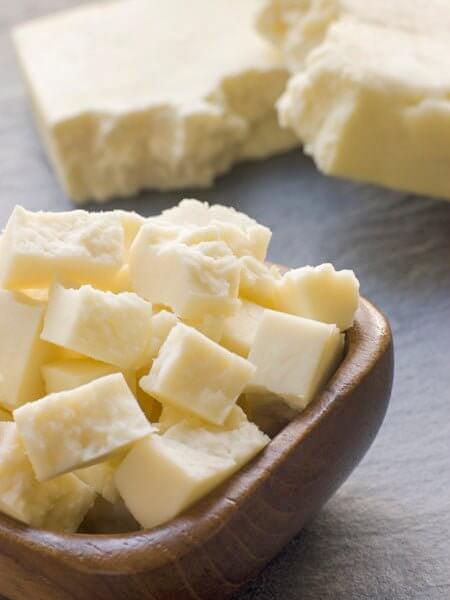
Paneer Cheese Making Recipe
-
Yield
1 Pound
-
Aging Time
None
-
Skill Level
Beginner
-
Author
Jim Wallace

Paneer Cheese Making Recipe Info
About Paneer
Essentials of Making Paneer
Texture and Flavor
Tips for Successful Paneer
Ingredients
Total price for selected items: Total price:
Instructions
-

Heat Milk
Buffalo milk was most traditionally used for this with its butterfat content of about 6%, but whole milk in the 3 - 4.5% range is commonly used today and much more readily available.
A low fat version using skim milk has been produced but has developed a reputation for being chewy and rubbery.
The milk used should be as fresh as possible; even cold stored milk has enzymes working at the cold temperatures to break down the proteins and compromise the milks flavor and ability to form a good cheese.
Begin by heating 1 gallon of fresh milk to 185-194F (85-90C). You can best do this by placing the pot with milk into a sink of very warm water. If you do this in a pot on the stove make sure you heat the milk slowly and stir it well as it heats.
Once the milk has reached the correct temperature, continue to hold the milk at this temperature for about 20-30 minutes. This will prepare the milk proteins to respond well to the acid addition in the next step.
-



Add Citric Acid
Add 1tsp of citric acid to 16oz of 170F water. This is a very diluted acid of about 2%. This will be about the same temperature that we will be cooling the milk to.
Before adding the diluted citric acid, allow the milk to cool to 170F. This is a more protein friendly temperature and allows the acid to easily mix into the milk before the proteins begin to coagulate. The result will be a more even curd development.
Once cooled to 170F, slowly add the diluted citric acid to the milk while gently stiring. This will begin separating the milk solids from liquid. Continue the slow stir until you see a separation of white curd and a yellow green whey, milk with a high fat content may have a cloudy whey.When you see a nice separation, shown in the above photo, stop stirring. The pot can now sit quiet for 20 minutes.
While waiting, line a steralized colander with butter muslin in preparation for drainign the curds.
Note: You can place the colander inside a large bowl to collect the whey for other uses, even if it's just for the garden or compost pile. -




Drain Curds
The curds can now be transferred to the colander lined with butter muslin. Begin by ladling the whey from the surface into the lined colander. Once the whey has been partially removed, the remaining curd can be poured into the drain cloth.
The curd should be allowed to drain for 30 minutes, a gentle stir half way through will help the to whey drain.
-



Press Curds
Once the curd has drained for 30 minutes, the cloth can be pulled up and tied into a ball. Make sure the cloth is pulled tightly around the curd mass. Then place a plate or lid over the curd. Place about 1-2 gallons of warm water into a pot and set it ontop of the plate, as shown above, this is a quick and easy "cheese press." Press the curd for 10 to 15 minutes. The amount of weight and time for pressing will depend on how dry and compact you want your final Paneer to be.
If you saved the whey, it contains a lot of flavor and nutrients and is great to use in stocks and soups, some folks have found it to be very tasty when cooled for just drinking. Taste it and see. If nothing else take it to the garden or compost pile.
-




Finished Cheese
Fresh Paneer won't last long in the fridge and should be used within a few days. Many people think that because the milk has been heated to such a high temperature, that it's stable for long term storage, this is not true.
The problems with storing this cheese are two fold:
- It contains a high level of lactose that will fuel any bacteria that it is exposed to during the post process.
- Tests have found that the ambient bacteria that it is exposed to (not traditional dairy bacteria, so not good) will multiply several thousand times within a week.
It can be stored at fridge temperature for 4-7 days with no salting and for 10 days to 2 weeks if lightly salted (2%) and packed in an air tight container.
When pressed the cheese will be firm and compact and once chilled it can be easily cut and cooked or fried. Traditionally, Paneer is made fresh and used within a day.
In making your own Paneer, you have control over how you want to use the cheese. The curd can be drained for a soft, crumbly cheese or lightly pressed for a firm slicing and grilling cheese.
By changing the cream content of the milk, the type of acid and the draining method, you can make a wide variety of cheeses.
Fresh Paneer that hasn't been pressed very long tends to be more crumbly and is best for sauces.
Firm Paneer can be sautéed, seared, or grilled, and still retain both it's shape and texture.
Cheese Making Supplies
Related Products
You May Also Like




































